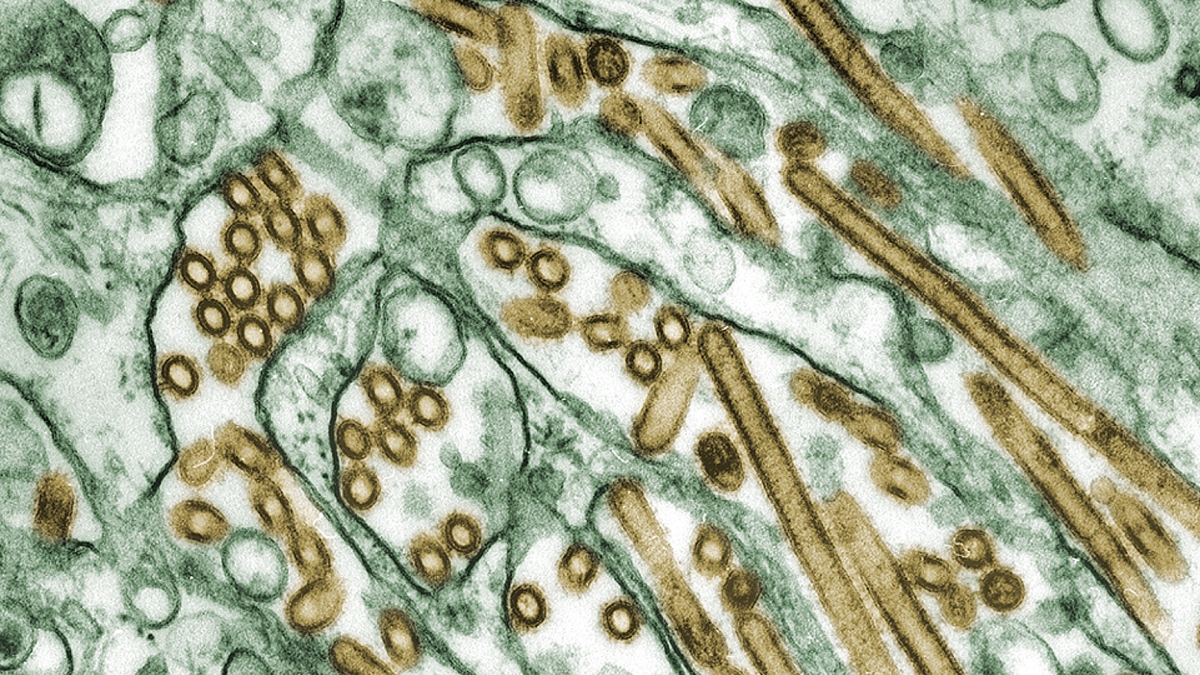ASU study aims to develop a risk model to pinpoint future bird flu outbreaks

Colorized transmission electron micrograph of Avian influenza A H5N1
Matthew Scotch, associate professor of biomedical informatics at Arizona State University's College of Health Solutions and assistant director of the Biodesign Center for Environmental Health Engineering, has received a $75,000 PLuS Alliance Accelerator Award to study how avian flu mutates and spreads. Scotch and his team will work to develop a risk model that enhances global security against future outbreaks.
Beginning in July, Scotch will spend four months in Australia working with colleagues from UNSW Sydney and King’s College London analyzing data from reported outbreaks as well as genetic sequence data from the H5N1, H7N9 and H5N2 strains of avian flu, known commonly as “bird flu.”
Combining outbreak data with bird flu strains’ genetic data on such a large scale has little precedent. Scotch and his fellow investigators hope that combining these two large data sets will allow them to develop a risk model of the various strains as well as pinpoint the environmental influences that increase the risk of outbreaks.
Knowing how fast bird flu virus strains can evolve and what environmental factors cause the mutations may help scientists predict where the next outbreaks will occur, allowing public health officials time to prepare and reduce the possibility of a pandemic.
A history of outbreak and infection
Although avian flu outbreaks have been reported in both wild and domestic bird populations since the nineteenth century, the first known case of human infection didn’t occur until 1997. Bird flu passes quickly among birds but advances much more slowly in humans who contract the virus from eating infected poultry or from contact with a contaminated place, such as a farm or market. Human-to-human infection is rare.

Matthew Scotch
While it does not spread through human populations as rapidly as it does in birds, avian flu is particularly lethal to humans, causing death rates between 38 and 53 percent, depending on the strain. For example, the World Health Organization reported that 860 people in 16 different countries contracted the H5N1 virus from 2003–2018. Of those, 454, or 52.7 percent, died. If any of these strains would evolve to pass more efficiently among humans, the results could be devastating.
The study will run for 18 months, after which Scotch and his research group may apply for a larger funded study, depending on the results of this preliminary work.
This project is funded by PLuS Alliance, a partnership of ASU, UNSW Sydney and King’s College, launched in 2016 to promote research-based solutions for global issues around sustainability, global health, social justice and technology and innovation.
More Health and medicine
ASU team part of nationwide study looking at Type 2 diabetes in youth
Near the end of an interview in which he talked about the work his team will be doing to tackle the rise in Type 2 diabetes among…
Leading the way in wellness: ASU highlighted in The Princeton Review's 2025 Mental Health Services Honor Roll
Being a college student isn’t easy — navigating new routines, people and places can be a challenge, especially if the right…
New Indigenous health dashboard offers robust database for scholars
By Nicole Greason and Kimberly Linn A team at Arizona State University’s College of Health Solutions and …